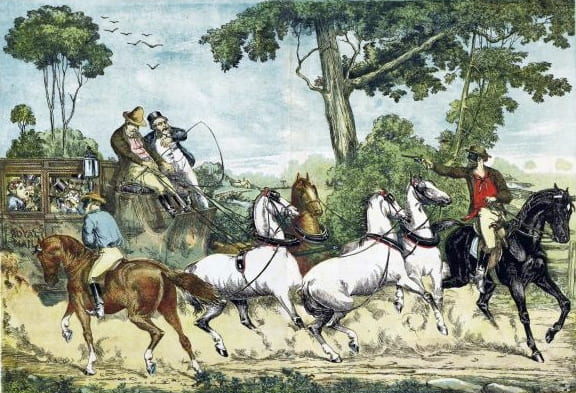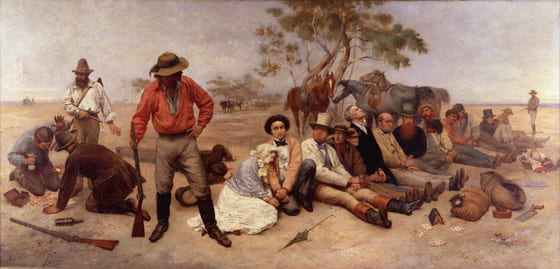By guest contributor Meg Foster
Heroes are big business in popular culture. From ancient Greek and Roman legends, through to the popular Marvel comic figures of our own time, we have spent centuries on the lookout for exceptional men and women to emulate, inspire and move us beyond the familiar rhythm of our daily lives. As folklorist Graham Seal notes, heroes embody the hopes, aspirations, values and longings of their followers. They are important not so much for their existence, as their supporters. One person is negligible compared to the legion who mimic them and incorporate their views of the world into their own. Hero worship affects how people think, feel and relate to one another, but it is not just about personally held values. It also affects how people act. Our heroes affect our sense of belonging, who we feel connected and responsible to, who we are apathetic towards and who we feel the need to protect. In this way legendary figures have influenced and continue to shape the course of history. But because of their associations with mass popular culture, low brow entertainment and parochial myth making, they are frequently regarded as beyond the realm of historical inquiry.
In Australia, the heroic figures that feature heavily in the national imaginary are ‘bushrangers’. Not to be confused with park rangers or game keepers, bushrangers were nineteenth century criminals who were on the run from the law. Bushrangers were Australians’ unique brand of highwaymen; thieves who committed ‘robbery under arms’ and roamed throughout the Australian bush. Even today, white, male bushrangers are lauded as national icons, associated as they are with bravery, chivalry and ridiculing inept or corrupt authorities. Ned Kelly is the most famous of this band of celebrated white men, and despite the affiliation with crime, Kelly is a veritable national icon. To give just one example, at the opening of the Sydney 2000 Olympic Games, hundreds of figures clad in his famous armour ran onto the stage and introduced Australia to the world. In rural Australia in particular, there is a roaring bushranger tourist trade, and locals still commemorate significant events in the lives of their fallen heroes.

Bushrangers, Victoria, Australia, 1852 (1887, oil on canvas, 29.7 x 61. cm) by William Strutt (1825–1915).
Much work still needs to be done untangling where the history of these characters has become entwined with exaggeration, fabrication and myth. But even more pressing is an exploration of the ‘other bushrangers’; bushrangers who were not white men, and never became a part of the national mythos. The fact that these figures even existed is met with surprise by most Australians (even academics) who hear about my PhD research. For bushranging to be so much a part of national identity, so pervasive in popular culture, and then to have these ‘other’ characters concealed from view shocks the sensibilities of many. There were African American, Chinese and Aboriginal bushrangers, as well as white and Aboriginal women who took up this nefarious trade; and these are only the people I have uncovered so far. When I speak about my research, people’s incredulity is usually quickly matched by enthusiasm. “Isn’t that great!” they exclaim. “A black bushranger, and women too, who would have thought?!” There is a strong push to include these ‘hidden’ figures in the national mythos, to place them as heroes alongside the likes of Ned Kelly and remark that the nation has always had a multicultural past. And while proffered in good faith, this approach is extremely problematic. ‘Other’ bushrangers were deliberately excluded from the burgeoning bushranging legend. Their uncritical, posthumous inclusion in this narrative does not reflect the reality that they lived in. And it overlooks what their experiences can tell us about colonial society.

‘Bushrangers Stuck Up’ Australian Illustrated News, 1870.
Colonial understandings about race and gender already positioned ‘other’ bushrangers on the lower rungs of the social and evolutionary ladder. That they then engaged in crime only reinforced their inferior position compared to white men. And yet, these bushrangers also disrupted colonial narratives of inferiority as they operated outside of the law and undermined white power. Aboriginal bushranger Jimmy Governor was so feared that whole towns were left deserted in anticipation of his arrival, and he survived on the run for almost three months. This was despite thousands of police and civilians joining the chase, resulting in what Laurie Moore and Stephen Williams have described as the “largest manhunt in Australian history” (iv). However, no bushranger was ever the same. While there are signs of agency and personality in the records of some ‘other bushrangers’, I am more often confronted with their absence. Other bushrangers were deliberately marginalized in their own times, and remain so today because they challenged colonial Australians’ ideas about race, sex, and gender, as well as how they saw their place in the world. But this makes the process of recovery even more important.
‘Other’ bushrangers disrupt pre-existing narratives. They complicate the idea that colonial power was ever absolute, natural or just. And their lives provide a unique lens through which to view national and transnational history. Although white, male bushrangers were (and remain) national heroes, there are other traditions that influenced the bushranging phenomenon. Sam Poo, the Chinese bushranger, was more likely to be influenced by Chinese legends of outlawry (that circulated from the twelfth century) than any emergent Anglo tradition. Mary Ann Ward may have seen her actions in light of Aboriginal strategies of resistance and freedom fighting, rather than solely in relation to her white bushranging spouse.
Heroes are important. They embody the hopes, aspirations, values and longings of their followers. They represent who we are and who we want to be. People who are excluded from this heroic status are excluded for a reason. And exploring their stories shines a unique, if not always complimentary, light on both national history, and Australia’s place in the world. Heroes are important. And challenging, analyzing and expanding upon popular mythology should be within the realm of history.
Meg Foster is a PhD candidate in History at the University of New South Wales. Under the supervision of Grace Karskens and Lisa Ford, Meg is investigating the ‘other’ bushrangers (Australian outlaws who were not white men) in history and memory. After completing her honours thesis on Indigenous Bushrangers in 2013, Meg worked as a researcher with the Australian Centre of Public History at the University of Technology, Sydney. She is the recipient of numerous awards and prizes, and was the inaugural winner of the Deen De Bortoli Award in Applied History for her article, ‘Online and Plugged In?: Public history and historians in the digital age’ featured in the Public History Review (2014). As well as her PhD, Meg works as an historical consultant and has a particular interest in making connections between history and the contemporary world.




March 15, 2018 at 1:25 am
Hey Meg
Really enjoyed the blog. Can I suggest you consider what part the Victorians ie people who lived in Victoria played in creating amnesia about the other bushrangers. Victorian historians usually began their histories from the founding date of Victoria ie 1851. That was still evident in the 20th Century. Never looked at much if anything before 1851. Even Geoff Serle never thought it worth comparing the Victorian goldfields with the NSW ones. If you do compare, it’s very illuminating. 19th century Victorian historians had big impact on shaping national memory and emphasis. Ned Kelly was of course a Victorian. At base it was also tied in to avoidance of convict ‘foundations’ v. progress of Marvellous Melbourne
Just a thought for your consideration…!
Best regards
Babette